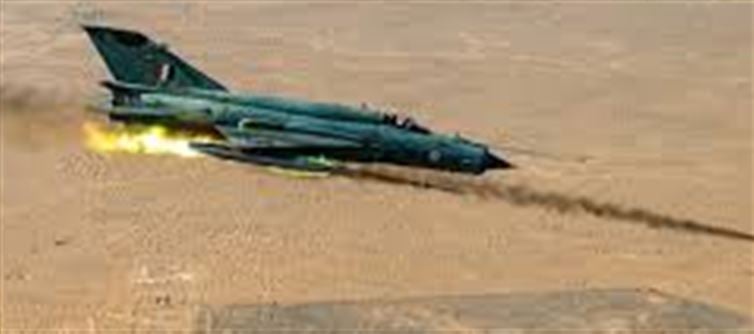
The MiG-21, often regarded as a "workhorse" of the indian air Force (IAF), may not carry the glamour of modern jets, but its lethal capability and historic significance cannot be overstated. For nearly six decades, the Soviet-era fighter has played a pivotal role in securing India's skies, and recently, it proved its worth again during Operation Sindoor, marking its final mission in May 2025.
Here’s a look at the real truth behind the MiG-21’s legendary status as the F-16 killer:
1. The MiG-21: A Legacy of Strength and Durability
· Introduction to the IAF: The MiG-21, first inducted into the indian air Force in 1963, quickly became the backbone of India's air defense system. Despite its age, the jet proved itself capable of competing with modern threats for decades.
· A True Workhorse: Often overshadowed by newer, more advanced aircraft, the MiG-21 is celebrated for its reliability in both peacetime and wartime conditions. It became synonymous with the IAF's quick response and combat readiness.
2. Combat-Ready and Lethal: MiG-21 in Action
· F-16 Killer: Perhaps one of the most notable achievements of the MiG-21 was its confrontation with the Pakistani F-16s during the 1999 Kargil War. The MiG-21s' agile performance and accurate missile strikes proved that this jet could stand toe-to-toe with more advanced western aircraft.
· Operation Sindoor: In its final mission in May 2025, the MiG-21 was once again called upon to defend indian airspace during Operation Sindoor. Pilots had nothing but praise for its sharp agility and deadly offensive capabilities in the face of enemy incursions, cementing its legacy as a formidable combat asset.
3. Pilots Speak: The MiG-21's Enduring Power
· Fast and Agile: Former pilots of the MiG-21 recall the jet's quick maneuverability, especially in dogfights, which made it a challenge for enemy aircraft like the F-16s to catch. Its lightweight design allowed pilots to execute sharp turns, critical for evading missiles and locking onto targets.
· Versatile Weaponry: Armed with a 23mm cannon and air-to-air missiles, the MiG-21 was capable of holding its own against modern fighter jets. Its ability to carry bombs also allowed it to carry out precision ground attacks effectively.
4. The MiG-21’s Modern-Day Legacy
· Advancements in Technology: Despite its aging design, many MiG-21s were upgraded over the years with modern avionics and radar systems, enhancing their combat capabilities. These upgrades ensured the jet remained relevant in India’s arsenal, even against more technologically advanced adversaries.
· Training Ground for Pilots: The MiG-21 also served as an excellent training platform for new pilots, honing their skills in high-speed combat and airborne maneuvers. This experience proved invaluable when transitioning to more advanced aircraft in the IAF's fleet.
5. The MiG-21’s Departure: A Fitting Sendoff
· The Final Flight: The retirement of the MiG-21 marks the end of an era. During its swansong mission, the jet once again delivered its promise of defending the skies and proving that age is just a number when it comes to performance and power.
· Legacy Secured: The MiG-21 will always hold a special place in the history of the indian air Force, with its contributions ranging from border defense to critical strike missions. Its legacy as the F-16 killer will forever be etched in the annals of IAF history.
Conclusion: The MiG-21's Timeless Impact
While its replacement by more modern fighters like the Su-30MKI and Tejas is already underway, the MiG-21's place in the IAF's history remains indelible. It was trusted, reliable, and deadly—proving time and again that the right training, leadership, and technology could turn an older aircraft into a formidable weapon in any battle.
The MiG-21, now retired, will be remembered not only as a veteran but as an aircraft that delivered its final, deadly salute to the skies, leaving behind a legacy that redefined India's air defense for generations to come.
Disclaimer:
The views and opinions expressed in this article are those of the author and do not necessarily reflect the official policy or position of any agency, organization, employer, or company. All information provided is for general informational purposes only. While every effort has been made to ensure accuracy, we make no representations or warranties of any kind, express or implied, about the completeness, reliability, or suitability of the information contained herein. Readers are advised to verify facts and seek professional advice where necessary. Any reliance placed on such information is strictly at the reader’s own risk.
.jpg)




 click and follow Indiaherald WhatsApp channel
click and follow Indiaherald WhatsApp channel